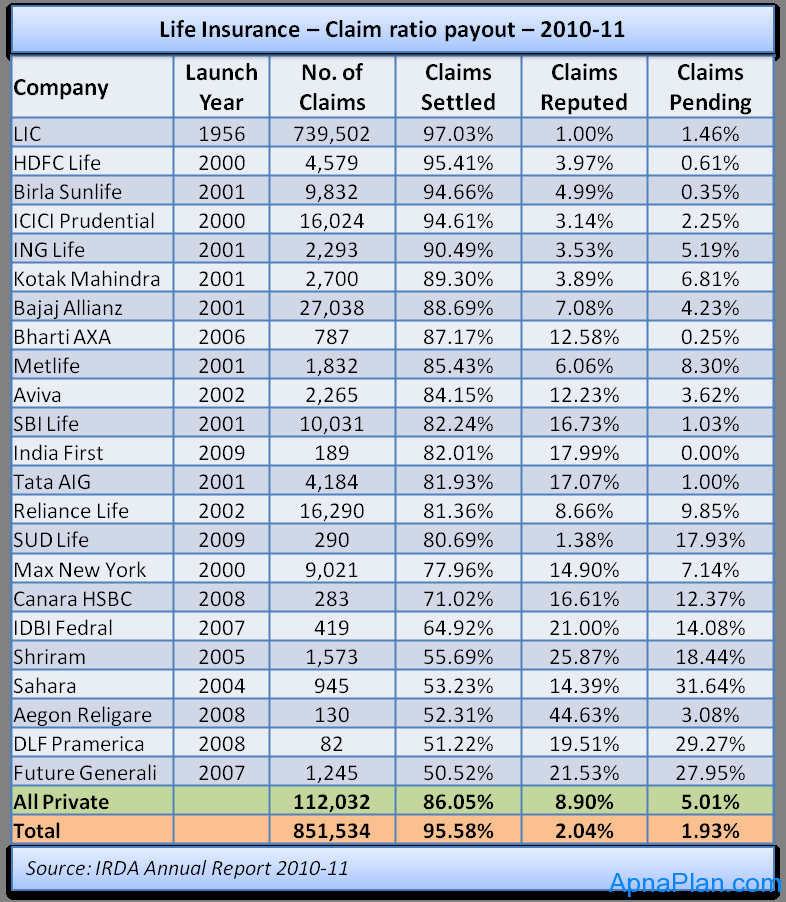ICICI Prudential, the second largest private life insurer
in the country, has reduced its branches by nearly a half from 1,923 to 1,000
in the last two years. The top six private insurers, barring SBI Life, reduced nearly 30
per cent of branches, while the headcount was scaled down 27 per cent in the same
period. Interestingly, the profits of all these players doubled over the last
two years.
Insurance companies have different
takes on the matter, terming it “right sizing” or “smart usage of realty” or
“efficient utilization of space” but the move to rationalize branch networks
was a direct fall-out of the stringent regulations introduced by the Insurance
Regulatory and Development Authority (Irda) in September 2010. TheIrda had
raised the lock-in period and the insurance cover on the popular unit-linked
products.
18-250
in the last couple of years. However, in the same period, SBI Life, the second
largest private life insurance player increased its branch network to around
714, from 494 as on March 31, 2010.
| CUT TO SIZE |
| Company | Branches | Headcount | Net Profit/Loss (Rs Crore) |
| 2009-10 | 2011-12 | Change | Change (%) | 2009-10 | 2011-12 | Change (%) | 2009-10 | 2010-11 | 2011-12 |
| ICICI Prudential Life | 1,923 | 1,000 | -923 | -48.0 | 20,000 | 13,200 | -34.0 | 260 | 810 | 1,384 |
| Bajaj Allianz | 1,151 | 1,044 | -107 | -9.3 | 20,000 | 13,829 | -30.9 | 540 | 1,057 | 1,311 |
| Max New York Life* | 705 | 464 | -241 | -34.2 | 10,454 | 7,583 | -27.5 | -20 | 190 | 572 |
| Tata AIG Life* | 433 | 294 | -139 | -32.1 | 8,100 | 4,744 | -41.4 | -400 | 52 | 107 |
| HDFC Life | 568 | 474 | -94 | -16.5 | 14,397 | 14,310 | -0.6 | -280 | -100 | 271 |
| Birla Sun Life | 652 | 634 | -18 | -2.8 | — | 12,279 | — | -435 | 305 | 461 |
|
In terms of the number of employees, these top six insurers have reduced it by 26 per cent on average. ICICI Prudential Life reduced its headcount 34 per cent to around 13,200 in March 31, 2012 from 20,000 in March 31, 2010. Bajaj Allianz trimmed its employee count by more than 30 per cent.
“Our headcount has remained more or less constant and we have consolidated our branch network, which has resulted in the company firmly staying on the path of profitable growth,” said an ICICI Prudential Life spokesperson.
Over the last two years, all these insurers have improved their bottom lines significantly and reported net profits, though new business income across the industry nosedived.
Collectively, these six insurers reported a net profit of Rs 4,106 crore during 2011-12, compared to a loss of Rs 335 crore during 2009-10.
According to the Irda report for 2010-11, the life insurance industry had reported a net profit of Rs 2,657 crore as against a net loss of Rs 989 crore in 2009-10. Besides LIC, eleven private companies reported profits in 2010-11.
For instance, while ICICI Prudential Life reported a net profit of Rs 1,384 crore for the year 2010-11 as against Rs 808 crore in the corresponding period of the previous year, another significant player, Max New York Life, which reported a Rs 190-crore net profit during 2010-11, has already made a net profit of Rs 572 crore in the first nine months of 2011-12. Similarly, HDFC Life, which reported a loss of Rs 100 crore last year, reported a net profit of Rs 271 crore in 2011-12.
According to analysts, the move can also be related to the promoters. Having invested capital for nearly a decade, promoters are now demanding positive returns.
"In an effort to enhance productivity while rationalising on costs, the number of branch offices was right sized. However, this right sizing was done in a manner to ensure that no geography was exited and more importantly ensuring that customers had uninterrupted service and access to financial solutions provided by the company," said an insurance official on the condition of anonymity.
During 2011-12, the life insurance industry's policy issuance was down eight per cent, whereas for the whole private players industry it was down 24 per cent.
As a result, the first-year premium collection of life insures, was down nine per cent to Rs 1,14,233 crore against Rs 1,25,826 crore in the corresponding period of the previous year.
In the same period, the total collection by the private life insurance industry was down 17 per cent.

